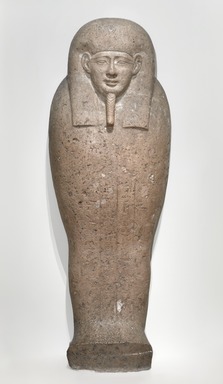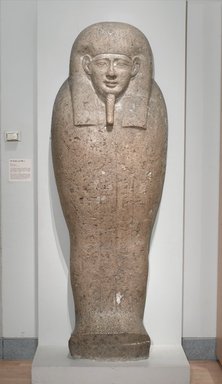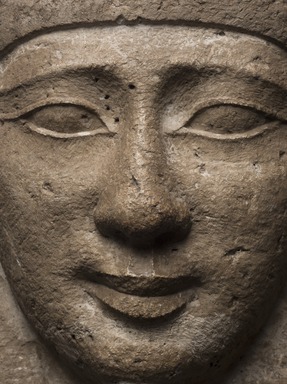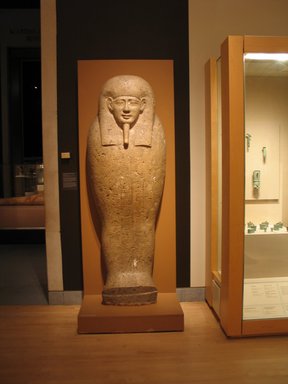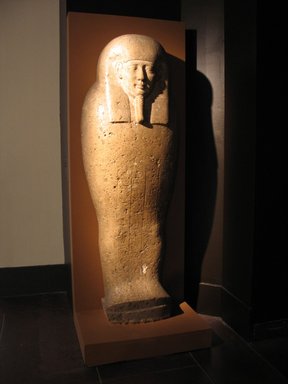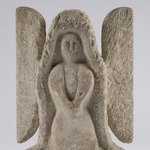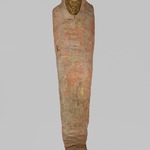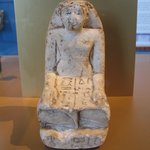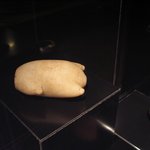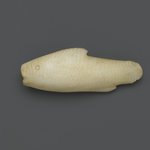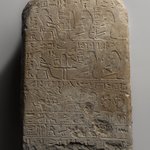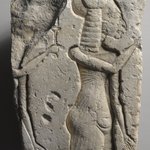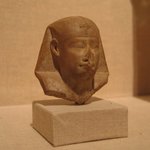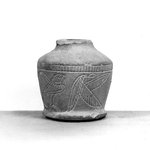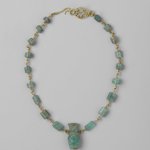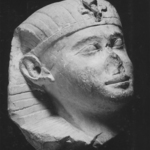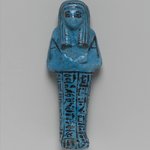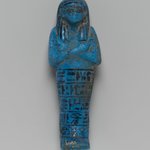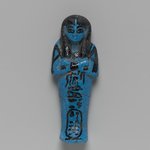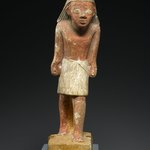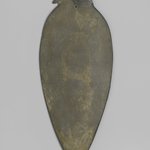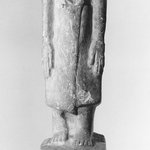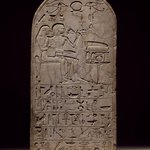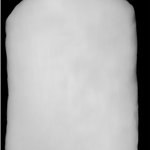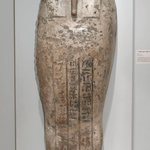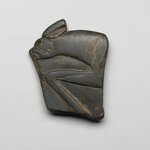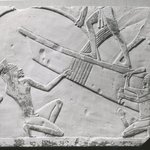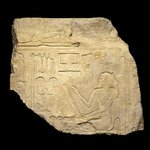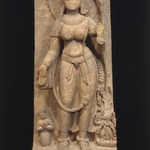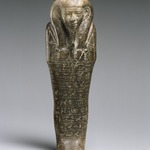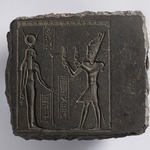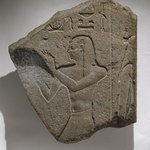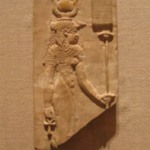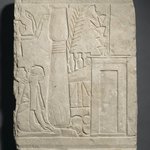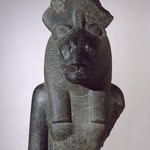Sarcophagus Lid for Pa-di-Inpu
Egyptian, Classical, Ancient Near Eastern Art
Although anthropoid, or mummiform, coffins made of stone instead of wood first appeared during the New Kingdom (circa 1539–1070 B.C.E.), they did not become common until the Late Period (circa 664–332 B.C.E.). The change from wood to stone reflects a step toward permanent protection in the afterlife.
Pa-di-Inpu, the owner of this limestone sarcophagus lid, served as a scribe attached to the cult of Inpu (Anubis to the Greeks), lord of the city of Hardai, and was named for the god. He also served as a royal scribe and as a priest in a cult of the goddess Hathor.
MEDIUM
Limestone
DATES
ca. 305–30 B.C.E.
PERIOD
Ptolemaic Period
DIMENSIONS
82 × 26 × 15 in., 1500 lb. (208.3 × 66 × 38.1 cm, 680.4kg)
(show scale)
INSCRIPTIONS
Three vertical columns of inscription down the front give names and titles.
ACCESSION NUMBER
34.1222
CREDIT LINE
Charles Edwin Wilbour Fund
PROVENANCE
Cemetery at el Tarmakiya, Hardai (Kynopolis), Egypt; archaeological excavation not yet documented; by 1930, acquired by André Bircher of Cairo, Egypt; 1934, purchased from F. Serveux-Sickenberger, agent of André Bircher estate, by Jean Capart for the Brooklyn Museum.
Provenance FAQ
CATALOGUE DESCRIPTION
Limestone sarcophagus lid of man with wig and beard. Three vertical registers of hieroglyphs run down the lower front. The translation is “Royal scribe, accountant of all things, priest of Hathor of Hebenis (the XVIth Nome of Upper Egypt), scribe of Anubis of Hiffonon (XVIIIth Nome of Upper Egypt), Pedi-Anubis, son of the Royal scribe, Pedi-Anubis born of a priestess of Uazit of Hiffonon Thet.” Judging by the similarity of names and titles of the owners of this lid and 34.1221 were of the same family.
Inscription: ss nsw.t hsb ht nb.t, hm-ntr n Ht-hr nb.t…., ss n Inpw nb Hr-dj; P;dj-inpw ; s; n ss nswt. P;-dj; ms n nb.t…..W;d.t, nb.t Hr-dj, Thn.t
Condition: The piece is entire and in good condition although there are numerous scratches and nicks on the surface.
MUSEUM LOCATION
This item is not on view
CAPTION
Sarcophagus Lid for Pa-di-Inpu, ca. 305–30 B.C.E. Limestone, 82 × 26 × 15 in., 1500 lb. (208.3 × 66 × 38.1 cm, 680.4kg). Brooklyn Museum, Charles Edwin Wilbour Fund, 34.1222. Creative Commons-BY (Photo: , 34.1222_edited_PS2.jpg)
IMAGE
overall, 34.1222_edited_PS2.jpg., 2018
"CUR" at the beginning of an image file name means that the image was created by a curatorial staff member. These study images may be digital point-and-shoot photographs, when we don\'t yet have high-quality studio photography, or they may be scans of older negatives, slides, or photographic prints, providing historical documentation of the object.
RIGHTS STATEMENT
Creative Commons-BY
You may download and use Brooklyn Museum images of this three-dimensional work in accordance with a
Creative Commons license. Fair use, as understood under the United States Copyright Act, may also apply.
Please include caption information from this page and credit the Brooklyn Museum. If you need a high resolution file, please fill out our online
application form (charges apply).
For further information about copyright, we recommend resources at the
United States Library of Congress,
Cornell University,
Copyright and Cultural Institutions: Guidelines for U.S. Libraries, Archives, and Museums, and
Copyright Watch.
For more information about the Museum's rights project, including how rights types are assigned, please see our
blog posts on copyright.
If you have any information regarding this work and rights to it, please contact
copyright@brooklynmuseum.org.
RECORD COMPLETENESS
Not every record you will find here is complete. More information is available for some works than for others, and some entries have been updated more recently. Records are frequently reviewed and revised, and
we welcome any additional information you might have.
